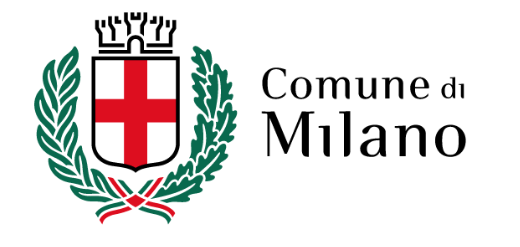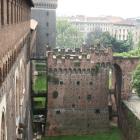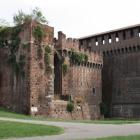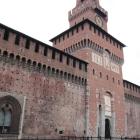- Milan Castle
- The building
- Gli ambienti di origine sforzesca
- I Rivellini
- I cortili
- I torrioni di Santo Spirito e del Carmine
- Il Cortile della Rocchetta
- Il Cortile delle Armi
- Il fossato
- L'ospedale Spagnolo
- La Cappella Ducale
- La Corte Ducale
- La Ghirlanda
- La Ponticella (sale IX e X nel Museo d’Arte Antica)
- La Sala degli Scarlioni (sala XV)
- La Sala del Tesoro
- La Sala delle Asse (sala VIII nel Museo d’Arte Antica)
- La Sala delle Colombine
- La Torre del filarete
- La sala dei ducali
- La strada coperta della Ghirlanda
- La torre Castellana e la torre Falconiera
- La torre di Bona
- Le Sale Ducali
- Le difese del Castello
- Le difese del Castello
- Le Merlate
- Le sale Ducali
- Le torri e le merlate
- The history
- Most recent restorations
- Don't miss out on
- The park
- The building
- Museums Libraries Archives
- Museo Pietà Rondanini - Michelangelo
- Museo d'Arte Antica
- Sala delle Asse - Leonardo da Vinci
- Pinacoteca
- Museo dei Mobili e delle Sculture Lignee
- Museo delle Arti Decorative
- Museo degli Strumenti Musicali
- Museo Archeologico - Sezione Preistoria e Protostoria
- Museo Archeologico - Sezione Egizia
- Raccolta delle Stampe "Achille Bertarelli"
- Gabinetto dei Disegni
- Archivio Fotografico
- Archivio Storico Civico e Biblioteca Trivulziana
- Biblioteca d'Arte
- Biblioteca Archeologica e Numismatica
- Casva (Centro di Alti Studi sulle Arti Visive)
- Ente Raccolta Vinciana
- Gabinetto Numismatico e Medagliere
- Opere dei musei in movimento
- The Castle and Milan
- Media gallery
- Plan your own tour

The Ravelins
Construction on the ravelins (protective fortifications built in front of the gates) began during the remodelling of the castle by Francesco Sforza, possibly using the Visconti era remains as foundations. The ruins of only three ravelins remain: two are on the eastern walls, one defending Porta del Carmine, and one placed where the medieval walls of the city met the castle; and one to the west, the ravelin of Porta Vercellina. The latter, built in correspondence with the gate of Porta di Santo Spirito, is the only one in which the quadrangular structure typical of Sforza architecture is visible. This, however, is the result of the renovation carried out by the architect Luca Beltrami, who, between 1911 and 1914, rebuilt a part of the battlements, the walls, corridor ceilings and internal spaces demolished at the time of the Spanish domination. To defend the main gate of the castle, Ludovico il Moro commissioned Leonardo to design a more modern pentagonal ravelin, that was eventually built during the French occupation under Louis XII, between 1499 and 1500. The few remaining vestiges of the construction lie forgotten in the castle moat.













